The Battery Management System (BMS) is a new product born in this century. Because the electrochemical reaction is difficult to control and the performance of the material changes in this process is elusive, it is necessary for such a housekeeper to monitor, adjust and limit the battery pack at all times. The behavior to ensure safe use, its main functions are:
1. Monitor battery status in real time. By detecting the external characteristic parameters of the battery (such as voltage, current, temperature, etc.), the appropriate algorithm is used to estimate and monitor the internal state of the battery (such as capacity and SOC, etc.), which is the basis and key for the effective operation of the battery management system;
2. Perform thermal management, battery balance management, charge and discharge management, fault alarm, etc. after correctly obtaining the status of the battery;
3. Establish a communication bus to exchange data with the display system, vehicle controller and charger.
The battery management system (BMS) is mainly divided into two parts. The first part is the front-end analog measurement protection circuit (AFE), including battery voltage conversion and measurement circuit, battery balance drive circuit, switch drive circuit, current measurement, communication circuit; The second part is the back-end data processing module, which is based on front-end calculations such as voltage, current, temperature, etc., and transmits the necessary information back to the system through the communication interface for control.
The current battery management system (BMS) product design scheme is monopolized by foreign manufacturers, and the battery management ICs provided by foreign semiconductor IC manufacturers are selected, and the application scheme is used as a reference for design.
Maxim, Linear Technology (acquired by ADI), Intersil, TI, ADI, NXP are major solution providers.
Maxim solution
Maxim's family of 12-cell battery monitoring Solutions, Maxim's battery monitors (MAX172XX series), battery protectors (DS277X series) and battery selectors (MAX1538) can effectively extend battery life and ensure a safe and reliable system jobs. Its family of high-voltage devices helps transform the low-carbon energy solution, and the device integrates advanced features to reduce the size, cost and design complexity of the battery management system. Consumers get higher system reliability, longer battery life and faster time-to-market.
Maxim program features:
1. Greatly simplified the design of multi-cell battery packs. The device contains 12 measurement channels and a capacitively isolated stepped SMBus communication bus, which greatly reduces component count and cost. This unique architecture allows up to 31 devices to be connected to a series battery pack to monitor up to 372 cells. Capacitor-based interfaces provide extremely low cost isolation between battery packs, eliminating cascading electrical faults.
2. Excellent performance, Maxim's high-voltage, small-size BiCMOS process features the industry's highest withstand voltage (80V) and excellent ESD protection (±2kV, human body mode) and hot-swap capability to ensure compliance over a wide operating temperature range The AEC-Q100 standard maintains high reliability.
3. The analog front end contains a 12-channel voltage measurement data acquisition system and a set of high-voltage, fault-tolerant switch inputs. The high speed, 12-bit ADC digitizes the battery voltage being tested. Using two-phase scanning technology to obtain battery measurement data and correct the error, this technology can simultaneously measure the battery voltage and complete the voltage measurement sampling of all 120 batteries in 10μs, ensuring excellent accuracy even in noisy systems. The error is less than ±0.25% over the nominal operating temperature range of the battery and less than ±20mV over the entire AEC-Q100 Class 2 temperature range.
4. Reduce power consumption by 10 times (100μA in operating mode) to extend battery life. The unique built-in shutdown circuit reduces power consumption to an extremely low level (leakage current is only 1μA), allowing the battery to be stored for years without sacrificing battery power.
5. Optimized for automotive applications, Maxim's internal configuration and self-diagnosis modes are critical to the safety monitoring system's work, ensuring trouble-free operation in harsh environments with magnetic fields and transient noise. Maxim uses a wide range of methods such as high current injection, stripline and in-vehicle monitoring to fully test the IC to ensure reliable operation in battery packs with strong transient electrical and magnetic field disturbances. The device features pin open and short fault detection as specified by the FMEA standard and is capable of handling internal circuit faults.
Maxim plan
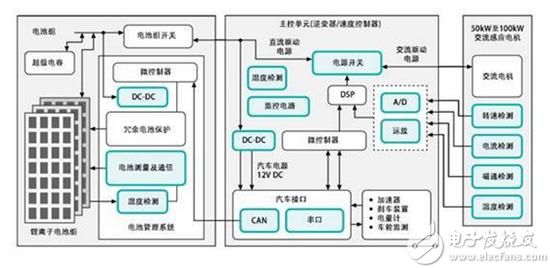
Linear Technology Solutions
Linear technology's multi-cell, high-voltage battery monitor series is a complete battery monitoring IC with a built-in 12-bit ADC, precision voltage reference, a high-voltage input multiplexer and a serial interface. These devices can be connected in series (without the use of optocouplers or opto-isolators) to monitor each cell in a long series connected battery.
Linear Technology's LTC6804-1 / LTC6804-2 - Multi-cell battery pack monitor, specifically designed for automotive and transportation applications, AEC-Q100 data in a specific package.
Program features:
1. Can measure the voltage of up to 12 series batteries, stackable architecture can support hundreds of batteries
2. Built-in isoSPITM interface: 1Mbps isolated serial communication with single twisted pair, up to 100 meters, low EMI sensitivity and radiation
3. 1.2mV maximum total measurement error, can complete measurement of all batteries in the system in 290μs: synchronous voltage and current measurement
4. 16-bit incremental accumulation (ΔΣ) ADC with frequency programmable third-order noise filter
5. System engineering for ISO26262 standard, passive battery charge balancing with programmable timer
6. 5 general purpose digital I/O or analog inputs: Temperature or other sensor input, configurable as an I2C or SPI master
7. 4μA sleep mode supply current
Linear Technology Solution Application
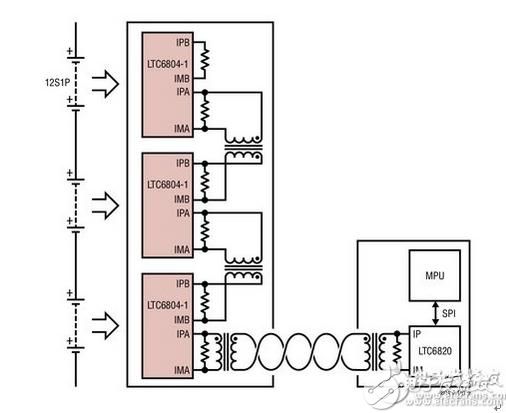
Intersil solution
Intersi's ISL78600 Li-Ion Battery Manager IC supervises up to 12 series connected batteries. Provides accurate monitoring, battery balancing and extensive system diagnostics. Three battery balancing modes are combined - manual equalization mode, timing balance mode and auto balance mode. Termination in automatic equalization mode indicates that the value of charge transfer specified by the host microcontroller has reached a balance.
Intersil's HEV/EV solution ensures that customers comply with the ISO26262 (ASIL) specification to prevent battery pack failure. The solution also provides built-in fault detection for all major internal functions and the ability to detect external faults such as line breaks, overvoltages and low voltages, as well as temperature and battery balancing faults.
The Intersil battery management system provides the high accuracy required for accurate state of charge measurements, extending vehicle mileage and the life of high-performance lithium-ion batteries. To do this, each chip uses a 14-bit temperature-compensated data converter that scans 12 channels in 250 microseconds.
In order to maximize communication reliability within the system, Intersil Battery Manager uses high noise immunity and transient fault tolerant communication mechanisms. This fully differential daisy chain architecture allows multiple battery packs to be stacked together using low cost twisted pair cables while preventing hot swapping and high transient voltages. The benefits of Intersil solutions can significantly reduce the overall cost of a battery management system.
The ISL78600 allows easy connection of the microcontroller via a 2.5MHz SPI or 400KHz I2C interface and operates over the -40°C to +105°C temperature range.
Intersil Battery Management System (BMS) Solution
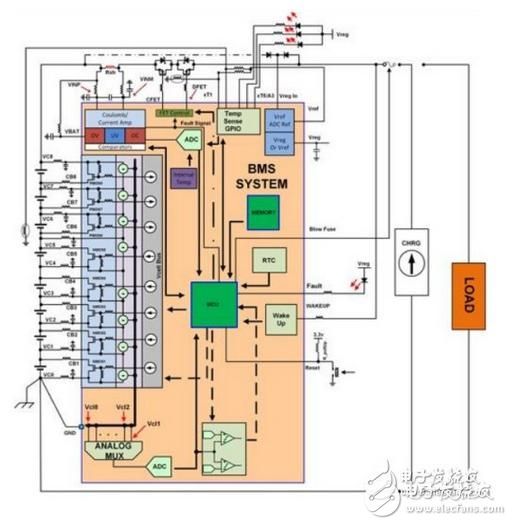
TI solution
TI offers a versatile combination of Li-Ion battery monitoring (for 3-16 series batteries), battery protection, certification and peripheral ICs. The monitor collects important battery parameters such as voltage, current, and temperature and forwards this information to the microcontroller. The battery protector detects a variety of fault conditions ranging from simple (overvoltage only) to advanced (detecting more faults) such as overvoltage, undervoltage, discharge overcurrent and short circuit. The certification and identification IC provides secure authentication or identification for battery packs and accessories such as charging cables and printer cartridges. Battery Peripherals ICs dramatically expand battery pack capacity through advanced technologies such as Active Battery Balancing (ACB) technology.
Program features:
TI recommends the active equalization method adopted by electric vehicles: each battery cell controls the combination of transformer and charging circuit by matrix switch to form a function of voltage/current "reservoir" with adjustable function. Inconsistent after charging and discharging, the charge and discharge capacity of the whole battery is reduced. It can be adjusted by connecting the circuit of the back end to the reservoir. When charging, the battery will not stop charging due to monitoring the internal pressure of a battery. It can also release 100% of the energy completely, thus extending the driving distance of the electric vehicle.
TI's energy conversion efficiency of isolated DC-DC active equalization technology is as high as 87%. The EM1410 chipset consists of five core chips plus five power supply chips. The most important EMB1432 is a four-channel AFE chip, the EMB1428 is a seven-channel gate controller chip, and the EMB1499 is a seven-channel voltage control chip. To construct a four-channel bidirectional active cell balancing function, 14 cells in series and a maximum operating voltage of 60V, providing 5V bidirectional equalization voltage and maximum 750V stack output voltage capability, and meeting AECQ-100 automotive electronic verification standards.
Texas Instruments Battery Management System (BMS) Solution

ADI program
ADI's AD7280A has all the features needed for general-purpose monitoring of laminated lithium-ion batteries used in electric vehicles. The device features multiplexed battery voltage and an auxiliary ADC measurement channel for battery management of up to 6 batteries. A ±3 ppm internal reference is also provided to provide a battery voltage accuracy of ±1.6 mV. The ADC resolution is 12 bits and it takes only 7 μs to convert 48 cells.
The AD7280A operates from a single VDD supply with a supply voltage range of 8 V to 30 V (absolute maximum rating of 33 V). The device provides six differential analog input channels to handle large common-mode signals over the entire VDD range. The range of input signals allowed for each channel (VIN(+) to VIN(-)) is 1 V to 5 V. The input pins accept six batteries stacked in series. In addition, the device has six auxiliary ADC input channels for temperature measurement or system diagnostics.
The AD7280A has an on-chip register that can be programmed to program the timing of the channel measurements. A built-in dynamic reminder is also available to detect if the battery voltage or auxiliary ADC input exceeds a user-defined upper or lower limit. The AD7280A has a battery balanced interface output that controls the external FET transistors and allows each battery to discharge.
The built-in self-test feature of the AD7280A internally applies a known voltage to the ADC input. With a daisy-chain interface, up to eight devices can be stacked without the need for separate device isolation.
The AD7280A requires only one power supply pin and consumes 6.5 mA under normal operating conditions at a conversion rate of 1 MSPS.
ADI Battery Management System (BMS) Solution
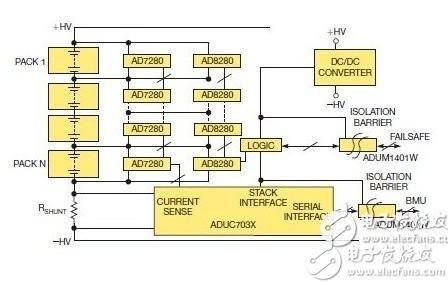
NXP solution
The World Group has introduced an automotive BMS battery management system solution based on the NXP chip that monitors the voltage and temperature of a single battery and monitors the entire voltage, current, and temperature.
Program specifications:
Monitor the voltage and temperature of a single battery
Monitor the entire voltage, current, temperature
Passive equalization between single cells
Battery compartment CAN bus or daisy chain connection
With multiple protection and diagnostic features
Single MC33771 monitors 8- 14 strings of batteries
Built-in passive equalization MOSFET with up to 300 mA passive equalization current
Built-in coulomb counter for current sensing
ASIL C chip functional safety level
Supports up to 15 MC33771 cascades
Detection accuracy 2mV
Supports 43 internal self-test functions
Synchronous measurement of voltage and current within 65 us
Functional block diagram:
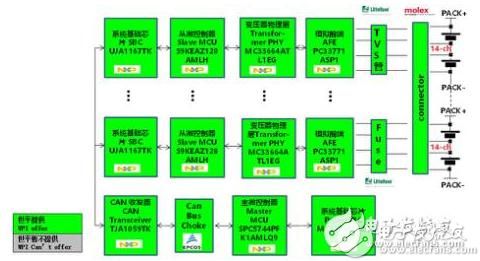
Advanced technology, stable and reliable products are the core characteristics of the battery management products of these six foreign companies. They explain their competitiveness from four dimensions: technology, function, quality and standard specifications.
Indoor Cable,Indoor Fiber Optic Cable,Indoor Fiber Cable,Indoor Optical Fiber Cable
Huizhou Fibercan Industrial Co.Ltd , https://www.fibercannetworks.com